Product Images Pregabalin
View Photos of Packaging, Labels & Appearance
- PDP-108 - PDP 108
- Figure 1 - pregabalin fig01
- Figure 2 - pregabalin fig02
- Figure 3 - pregabalin fig03
- Figure 4 - pregabalin fig04
- Figure 5 - pregabalin fig05
- Figure 6 - pregabalin fig06
- Figure 7 - pregabalin fig07
- Figure 9 - pregabalin fig08
- Figure 10 - pregabalin fig09
- Figure 11 - pregabalin fig10
- Figure 12 - pregabalin fig11
- Cockcroft and Gault equation - pregabalin formula
- Chemical Structure - pregabalin str
Product Label Images
The following 14 images provide visual information about the product associated with Pregabalin NDC 45865-108 by Medsource Pharmaceuticals, such as packaging, labeling, and the appearance of the drug itself. This resource could be helpful for medical professionals, pharmacists, and patients seeking to verify medication information and ensure they have the correct product.
PDP-108 - PDP 108

This is a prescription for Pregabalin Capsules, 150MG, a generic for Lyrica CV, used to treat nerve and muscle pain. The medicine can cause dizziness. The medication is not transferable to anyone other than the patient for whom it was prescribed. There are four different Pregabalin Capsules listed, with different quantities and expiration dates. The prescription was filled at a controlled drug store.*
Figure 1 - pregabalin fig01
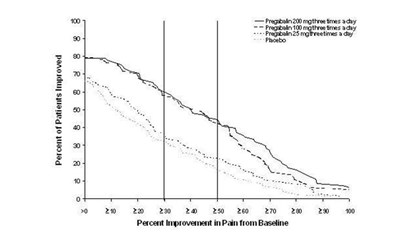
The text provided is a combination of numbers, symbols, and gibberish. It is not clear what data or information is being conveyed. Therefore, the description cannot be generated.*
Figure 2 - pregabalin fig02
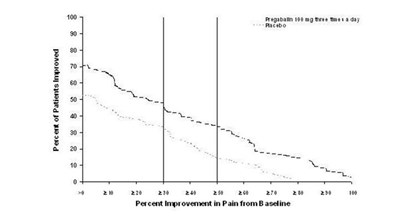
This is a report showing the percentage of patients who improved their pain levels after taking Pregabalin 160 mg for 3 days. There are also some numbers indicating the improvement in pain from a baseline, but the context is not clear.*
Figure 5 - pregabalin fig05
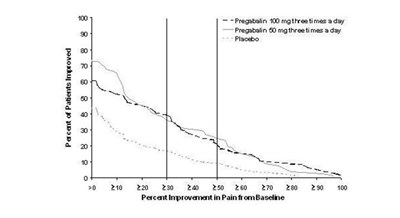
This looks like a clinical trial report comparing the effectiveness of Pregabalin and Placebo in reducing pain in patients. The dosage of Pregabalin was 80mg three times a day and for Fregabalin, it was 100mg three times a day. The report mentions the percentage of patients who improved and the percentage of improvement in pain from the baseline.*
Figure 6 - pregabalin fig06
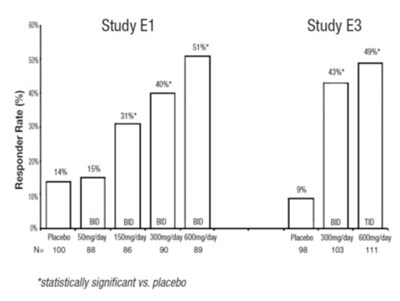
The text appears to be a table showing different studies conducted with different doses of medication, including a placebo group, and indicating statistical significance compared to the placebo. The table has various blank cells and some characters that are not readable.*
Figure 9 - pregabalin fig08

The chart shows the percentage of patient improvement in pain from the baseline with the daily dose of Pregabalin 300mg and 450mg compared to the placebo. The text does not provide any additional information.*
Figure 10 - pregabalin fig09
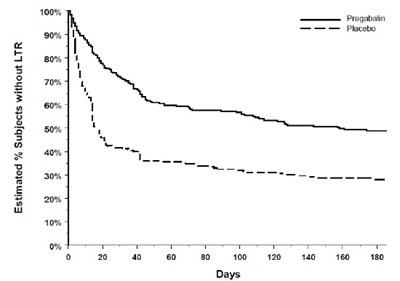
This may be a chart or graph displaying estimated percentages of subjects without LTR for two groups, Progabain and Placebo, over a period of 180 days. The percentages range from 0% to 100%. However, without further context or a clearer image, it is difficult to provide a more precise description.*
Figure 12 - pregabalin fig11
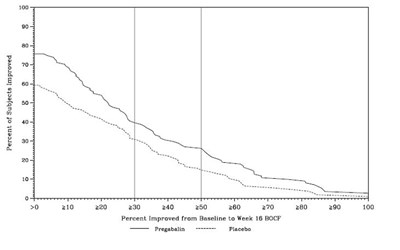
This text provides a chart with the percent of subjects who improved from baseline to week 16 using Pregabalin and Placebo. The percentages of improvement are listed on the y-axis and range from 100% to 280%. On the x-axis, there are increments of 10 starting from 210 to 270.*
Cockcroft and Gault equation - pregabalin formula

This appears to be a formula or equation related to calculating creatinine clearance (CLCT) using variables such as age, weight, and serum creatinine level. The equation involves the calculation of [140 - age (years)] multiplied by weight (in kilograms), then multiplied by a factor of 0.85 for female patients. This product is then divided by 72 multiplied by the serum creatinine level (in milligrams per deciliter). The purpose of this formula likely relates to evaluating renal function or kidney health in patients.*
* The product label images have been analyzed using a combination of traditional computing and machine learning techniques. It should be noted that the descriptions provided may not be entirely accurate as they are experimental in nature. Use the information in this page at your own discretion and risk.




